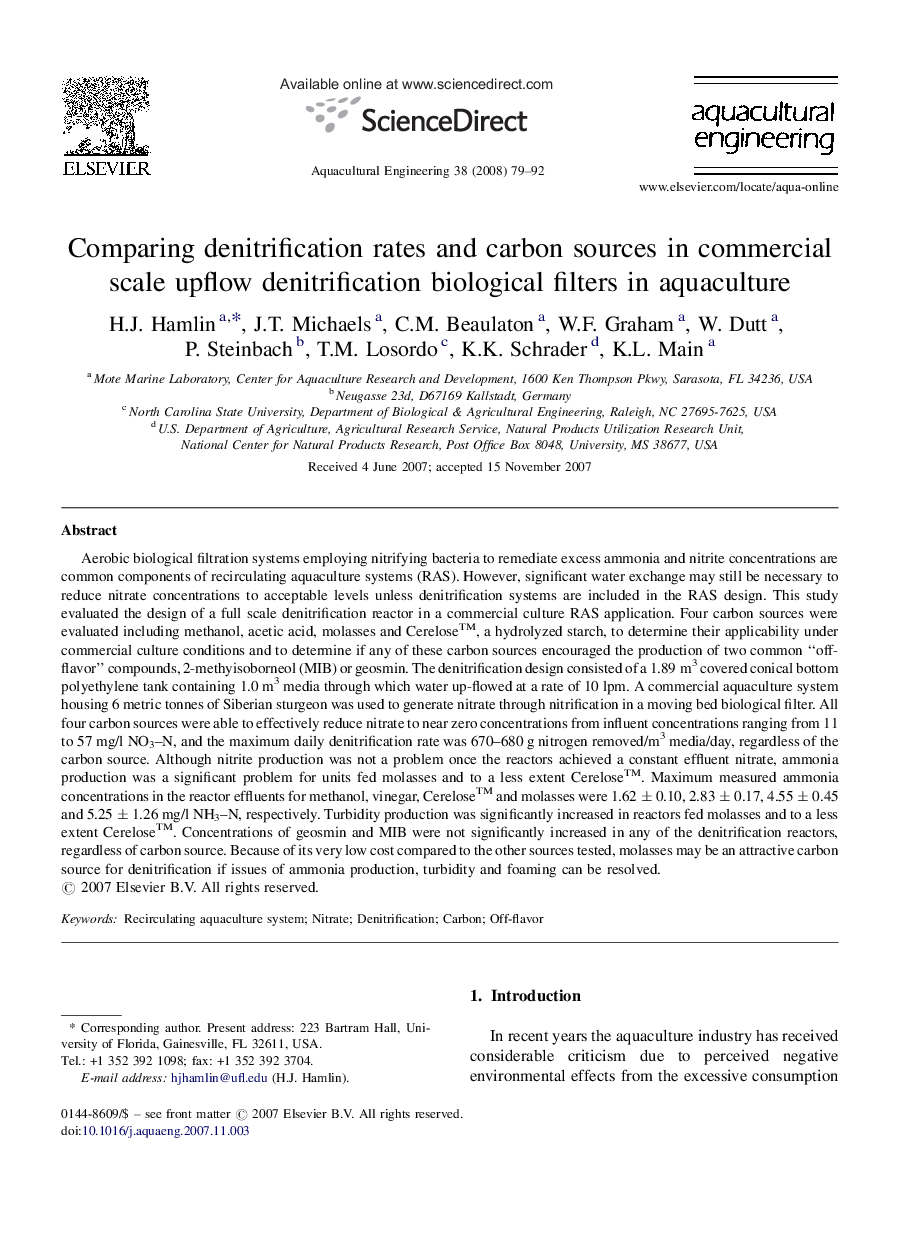| کد مقاله | کد نشریه | سال انتشار | مقاله انگلیسی | نسخه تمام متن |
|---|---|---|---|---|
| 4527414 | 1324103 | 2008 | 14 صفحه PDF | دانلود رایگان |

Aerobic biological filtration systems employing nitrifying bacteria to remediate excess ammonia and nitrite concentrations are common components of recirculating aquaculture systems (RAS). However, significant water exchange may still be necessary to reduce nitrate concentrations to acceptable levels unless denitrification systems are included in the RAS design. This study evaluated the design of a full scale denitrification reactor in a commercial culture RAS application. Four carbon sources were evaluated including methanol, acetic acid, molasses and Cerelose™, a hydrolyzed starch, to determine their applicability under commercial culture conditions and to determine if any of these carbon sources encouraged the production of two common “off-flavor” compounds, 2-methyisoborneol (MIB) or geosmin. The denitrification design consisted of a 1.89 m3 covered conical bottom polyethylene tank containing 1.0 m3 media through which water up-flowed at a rate of 10 lpm. A commercial aquaculture system housing 6 metric tonnes of Siberian sturgeon was used to generate nitrate through nitrification in a moving bed biological filter. All four carbon sources were able to effectively reduce nitrate to near zero concentrations from influent concentrations ranging from 11 to 57 mg/l NO3–N, and the maximum daily denitrification rate was 670–680 g nitrogen removed/m3 media/day, regardless of the carbon source. Although nitrite production was not a problem once the reactors achieved a constant effluent nitrate, ammonia production was a significant problem for units fed molasses and to a less extent Cerelose™. Maximum measured ammonia concentrations in the reactor effluents for methanol, vinegar, Cerelose™ and molasses were 1.62 ± 0.10, 2.83 ± 0.17, 4.55 ± 0.45 and 5.25 ± 1.26 mg/l NH3–N, respectively. Turbidity production was significantly increased in reactors fed molasses and to a less extent Cerelose™. Concentrations of geosmin and MIB were not significantly increased in any of the denitrification reactors, regardless of carbon source. Because of its very low cost compared to the other sources tested, molasses may be an attractive carbon source for denitrification if issues of ammonia production, turbidity and foaming can be resolved.
Journal: Aquacultural Engineering - Volume 38, Issue 2, April 2008, Pages 79–92